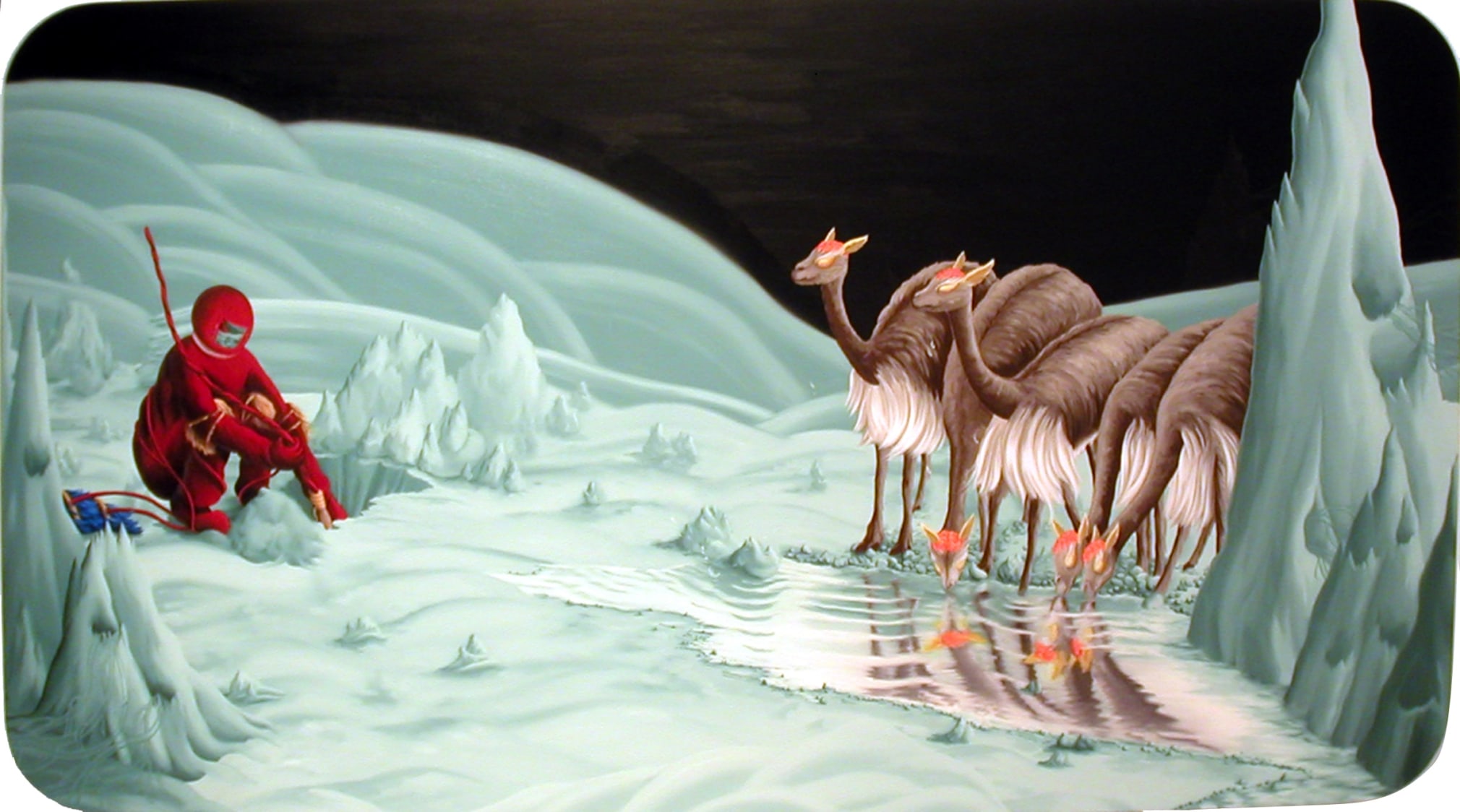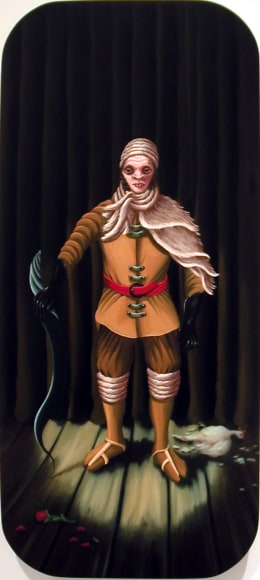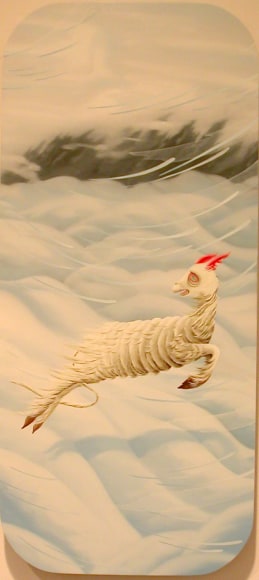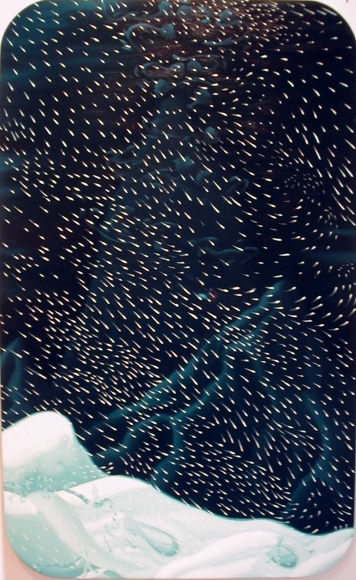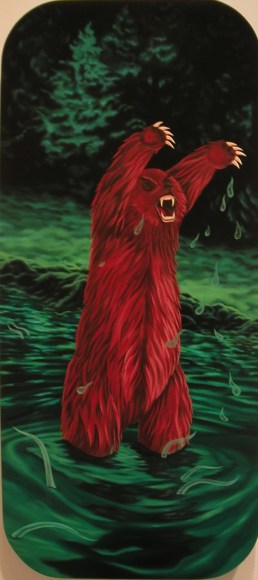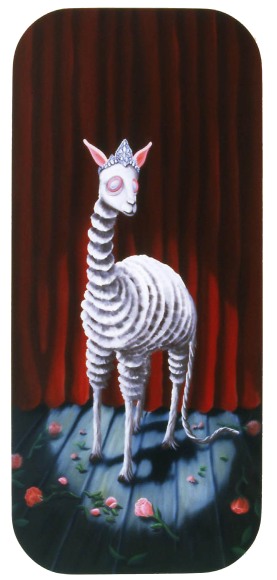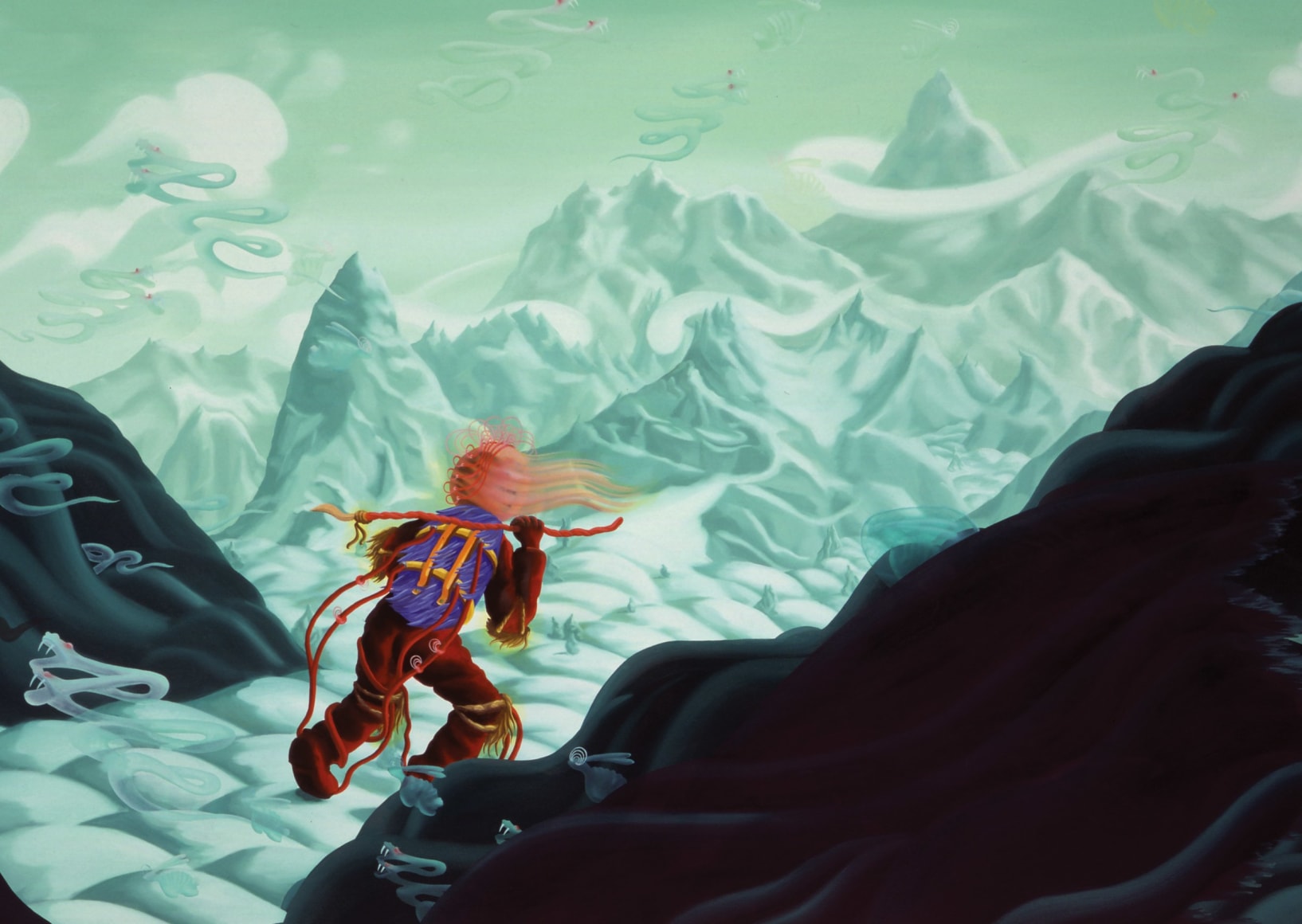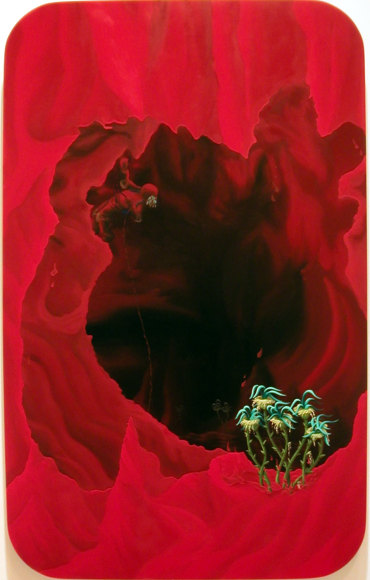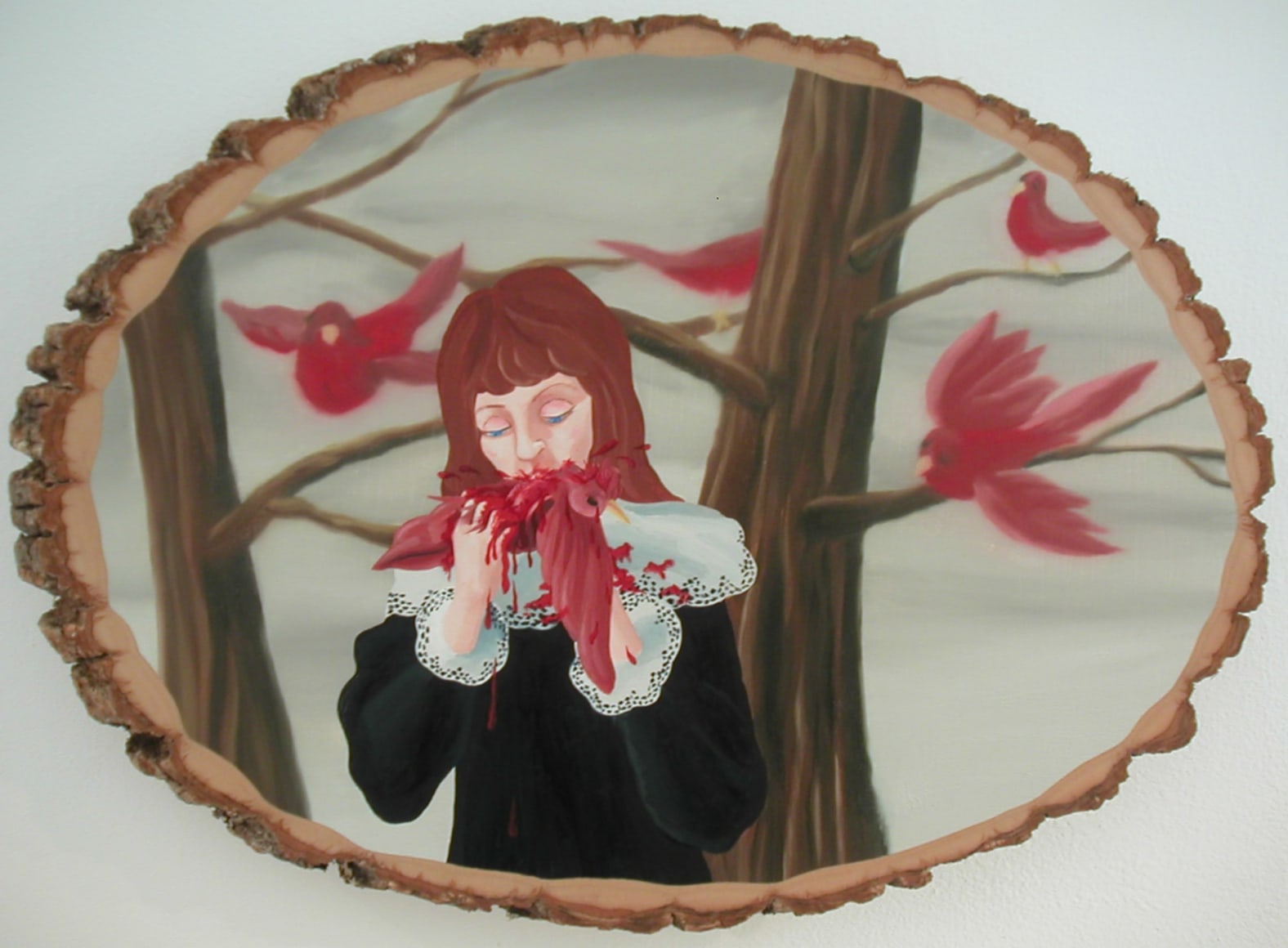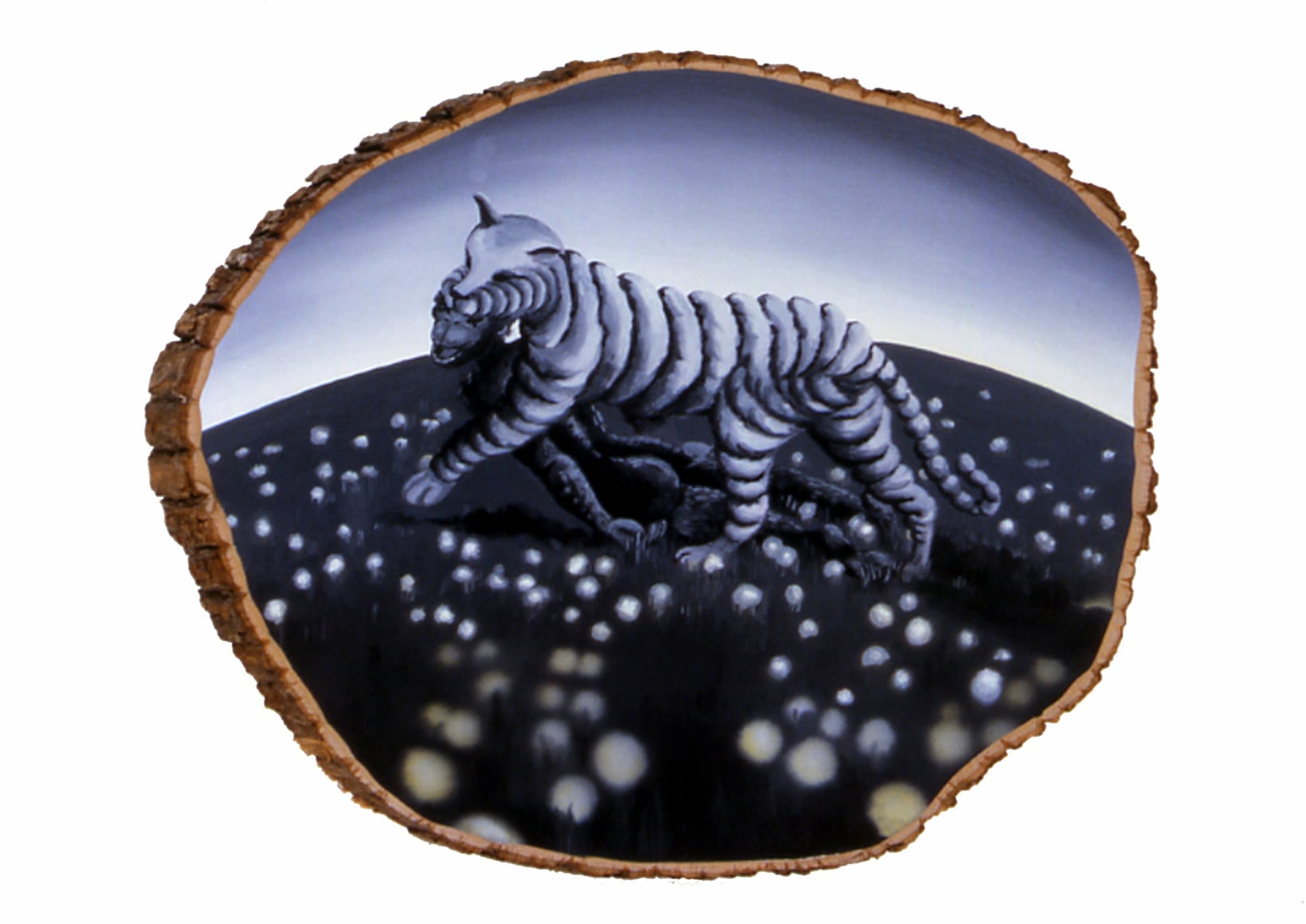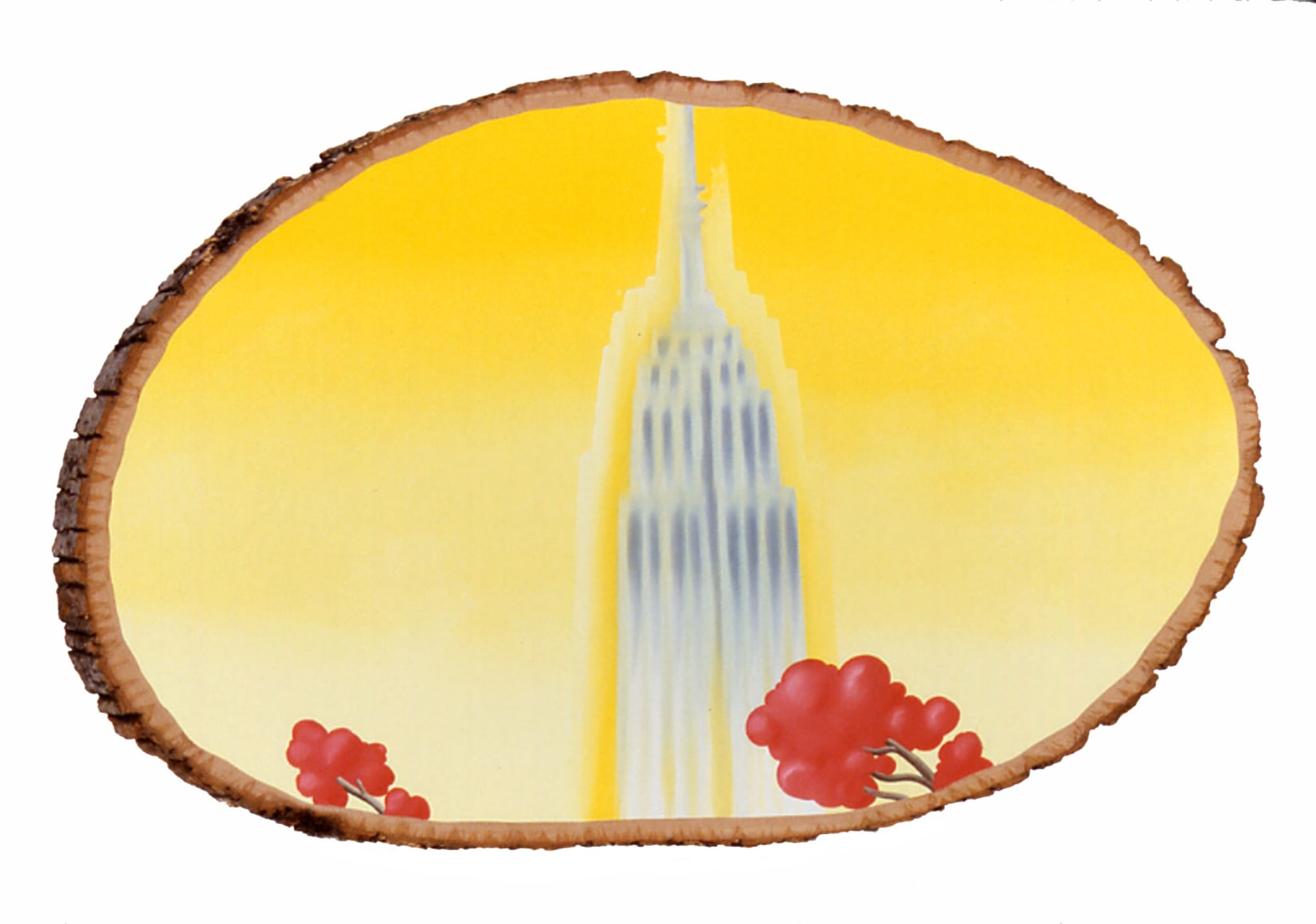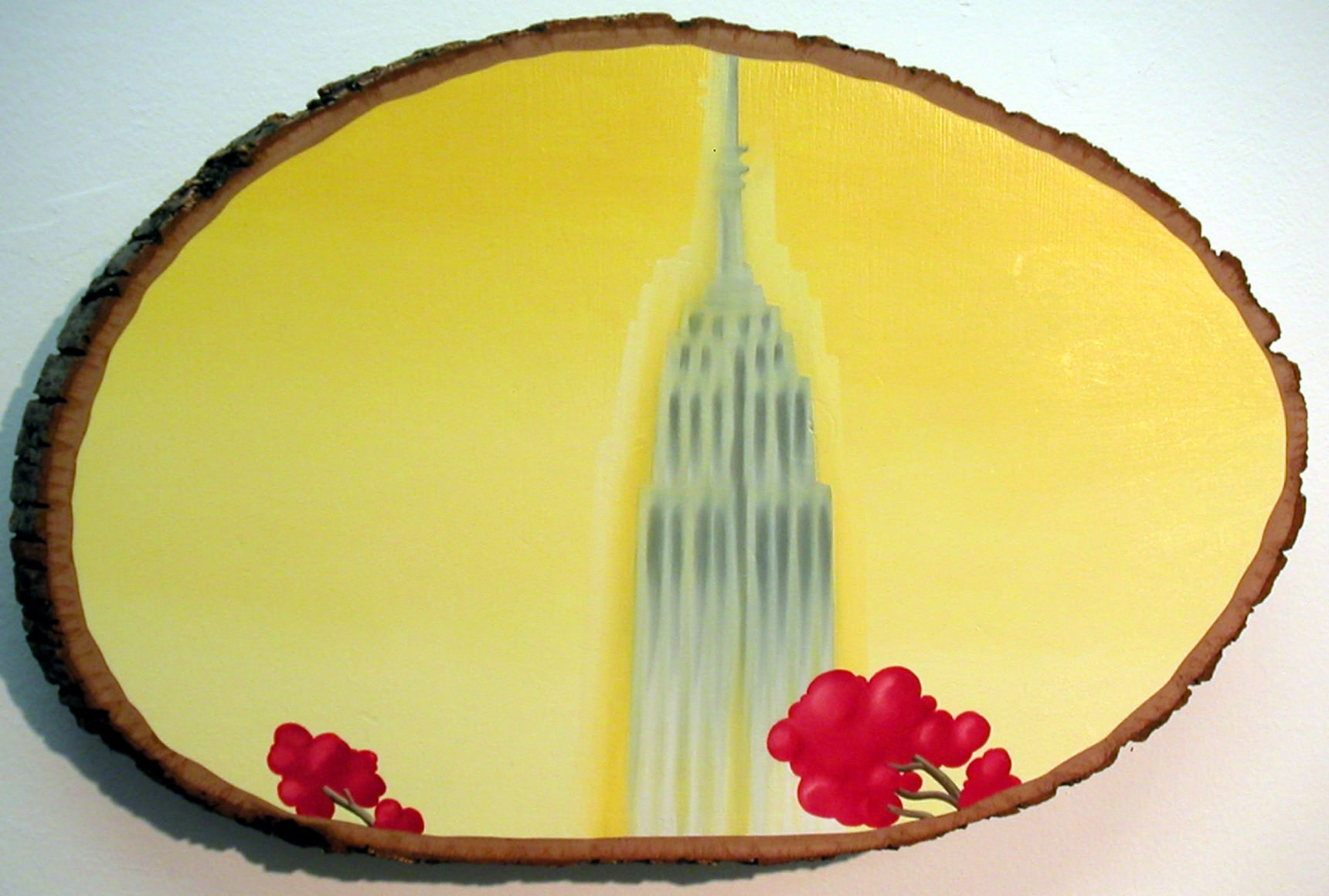In an explorative departure from the art historical tradition of painting within the non-referential rectangle, Andrew Sendor has utilized specificity of both canvas shape and installation as integral and informative elements in this current body of work. Please Stand Clear is an installation of paintings which have been executed on panels fabricated according to the exact shape and dimensions of the windows on New York City subway cars (Model R68). The panels are installed in the same orientation as they are situated in a subway car to poetically simulate the experience of being on the subway.
The subway functions as a symbol of human evolution: a reference point to enable comparison between contemporary urban life as opposed to life in the natural environment in which wild animals live. In both environments, the concept of predator and prey can be applied: in the animal kingdom these roles tend to be directly related to the innate drive for survival. Comparatively, conditions in urban human society have allowed us to all but supercede the preoccupation with base survival; we are now consumed by the dream of success. On an emotional level, we each alternate between the roles of predator and prey in our drive to the top.
The Spaceman-Caveman character goes through extreme polarities in his drive for success: at moments he feels all-powerful, conquering the mighty mountain heights, a predator in search of his goal; in other moments, a snow storm overwhelms him and in his vulnerability he is thrust into the position of prey. In other paintings, we see fictional hybrid animals in otherworldly landscapes . . . vulnerable deer-lambs and llamas with exposed brains are confronted by an aggressive bear and a rather frightening medieval character named the Executioner.
The vivid, dreamlike imagery reflects skilled craftsmanship in its attention to detail and sensitivity to refined color relationships. This results in narrative paintings whose elements of fantasy are made all the more real due to their articulate representation.

